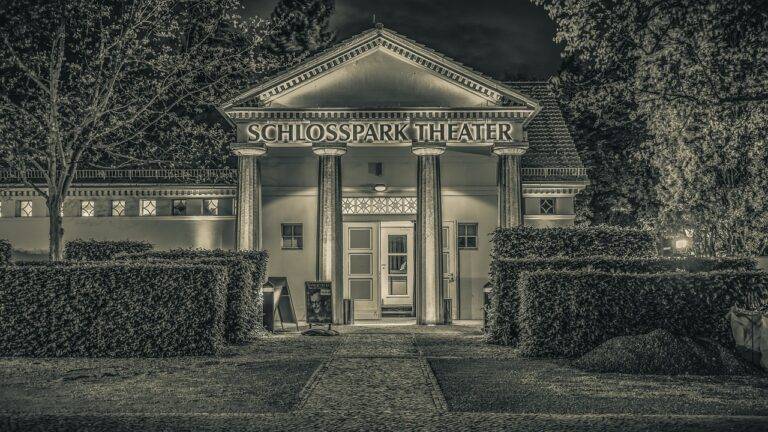The Influence of Artistic Movements on Visual Effects in Film: Surrealism, Expressionism, and Beyond
Artistic movements in film have played a significant role in shaping the visual language of cinema. From the avant-garde experiments of the early 20th century to the modern blockbusters of today, filmmakers have drawn inspiration from various art movements to create visually stunning and emotionally compelling works. These movements have influenced not only the aesthetics of film but also its narrative structure, thematic content, and overall impact on audiences.
One such influential artistic movement in film is surrealism, which explores the juxtaposition of dream-like imagery and subconscious themes to evoke emotions and challenge conventional storytelling. Surrealist filmmakers, such as Luis Buñuel and Salvador Dalí, have pushed the boundaries of visual effects and narrative conventions, creating cinematic experiences that blur the lines between reality and fantasy. The impact of surrealism on visual effects in film can be seen in the use of symbolism, non-linear storytelling, and experimental editing techniques that aim to engage viewers on a deeper, more visceral level.
• Surrealism in film explores dream-like imagery and subconscious themes
• Filmmakers like Luis Buñuel and Salvador Dalí push boundaries of visual effects and narrative conventions
• Impact of surrealism can be seen in symbolism, non-linear storytelling, and experimental editing techniques
Surrealism and Its Impact on Visual Effects
Surrealism in film is a unique artistic movement that aims to unleash the power of the subconscious mind. Through dream-like visuals, unconventional storytelling, and unexpected juxtapositions, surrealist filmmakers challenge conventional norms and evoke strong emotions in the audience. This approach allows for a deeper exploration of themes and ideas that may not be easily expressed through traditional narrative techniques.
The impact of surrealism on visual effects in film cannot be understated. By pushing the boundaries of reality and embracing the absurd, filmmakers are able to create stunning and otherworldly visuals that captivate viewers. Surrealism challenges the limitations of traditional filmmaking, inspiring the development of innovative special effects techniques that transport audiences to fantastical realms beyond imagination.
Expressionism in Film: A Visual Influence
Expressionism in film, a visual influence that emerged in the early 20th century, has left a lasting impact on the visual aesthetics of cinema. Utilizing distorted shapes, harsh lighting, and exaggerated angles, expressionist films aimed to convey the emotional and psychological states of characters through visual means. Directors such as F.W. Murnau and Fritz Lang embraced this stylistic approach to create haunting and evocative cinematic worlds that resonated with audiences on a deeper level.
The striking visuals of expressionist films often mirrored the characters’ internal struggles and external environments, emphasizing mood and atmosphere over realism. By manipulating sets, lighting, and camera angles, filmmakers were able to create dreamlike and otherworldly visuals that transported viewers into fantastical realms. This intentional distortion of reality allowed expressionist films to explore themes of alienation, madness, and inner turmoil in a visually captivating manner, setting the stage for future cinematic movements to delve into the depths of human emotion and psyche.
What is Expressionism in film?
Expressionism in film is a cinematic style that emphasizes the expression of emotion and inner experience over realistic portrayal. It often uses distorted visuals, dramatic lighting, and unconventional set designs to convey a sense of heightened reality.
How did Expressionism influence the visual style of films?
Expressionism influenced the visual style of films by introducing techniques such as distorted perspectives, exaggerated angles, and contrasting light and shadow to create a mood or convey a character’s emotional state.
What are some examples of films that showcase Expressionist influences?
Some examples of films that showcase Expressionist influences include “The Cabinet of Dr. Caligari” (1920), “Nosferatu” (1922), and “Metropolis” (1927).
How did Expressionism impact the development of film as an art form?
Expressionism had a significant impact on the development of film as an art form by pushing boundaries and exploring new ways of storytelling through visual language. It paved the way for future filmmakers to experiment with visual effects and create immersive cinematic experiences.
Is Expressionism still relevant in contemporary cinema?
While the heyday of Expressionism in film was during the early 20th century, its influence can still be seen in contemporary cinema. Filmmakers continue to draw inspiration from Expressionist techniques to create visually striking and emotionally resonant films.





